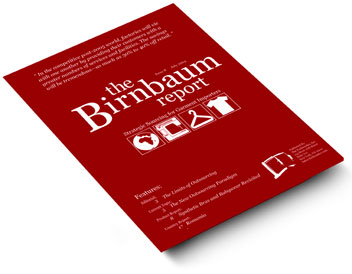The Problem with GAP
The Road to Failure — The Problem with GAP
by David Birnbaum
Success for the retailer is a triad: Customer – Product – Value
Select your customer.
Provide the products your customer wants;
in an environment and at a price your customer considers reasonable.
GAP: THE GOOD TIMES:
At the close of the 20th century Gap was not only the world’s largest and most successful garment retailer, GAP set the standard which all others aspired to meet.
Gap was structured for success.
Gap understood its customer and was totally dedicated to catering to that customers needs: The GAP customer had little interest in fashion and less interest in fad; but wanted a well designed, well made garment, sold in a clean, clear and well managed store.
Gap surpassed their customers needs.
As the Gap customers grew up, Gap grew-up with its customers.
As the customers became more affluent, Gap created Banana Republic to provide a more up-market product, while still maintaining the Gap no-fashion persona.
As their customers married and started families, Baby GAP and GAP Kids were right up there with them, catering to what eventually would have become the next generation of loyal GAP customers.
15 years ago, I was a GAP customer. Twice a year, I would buy clothing for my children.
As a father I appreciated both the in-store service and the product merchandising where tops and bottoms fit together perfectly as sets.
As a garment professional, I was impressed that a company the size of GAP was able to maintain the highest standard of make, using the best material available. T-shirt with virtually no shrinkage; Color fast with perfect color match.
GAP THE BAD TIMES
Today, 12 years later, GAP is structured for failure. From January 2005 to March 2012, Same store sales increased in 22 months but declined in 65 months.
The quality of the product has deteriorated;
The quality of design has deteriorated;
The merchandising has deteriorated;
But, most importantly, GAP no longer has a definable customer.
In short GAP does not know who they are selling, what they are selling or why anybody would buy their product in the first place.
Some time during the next decade, someone, someway will try to determine just what happened at GAP. That might be The Harvard Business School — the case study, because it is a salutary lesson for everyone in the industry. It might also be the HBO—the miniseries, because the GAP story is one filled with drama and more than its share of heroes and villains.
THE PROBLEM WITH GAP
The Gap structure and system was the creation of one man: Mickey Drexler who ran the company from 1983 until he was fired in 2002. Drexler might well be the finest merchant of his generation, very much in the school of Stanley Marcus and Simon Marks.
The great garment industry merchants all have two talents:
- The merchant’s eye — the intuitive ability to know precisely if a particular style is saleable to their customer.
- The commitment to design integrity — The ability to provide that specific product to their customer.
All three — Marks, Marcus and Drexler — had the eye, and all three were able to provide the product.
Each had a commitment to design integrity, but met different challenges. Simon Marks developed a small network of independent British factories committed to producing to M&S’ strict standards. Stanley Marcus worked with a limited number of established brand suppliers both in the U.S. and Europe, all competent to meet Neiman Marcus’ requirements.
However, because of GAP’S size and the shift to low cost gament exporting countries Drexler did not have the advantages available to Marks and Marcus. Drexler was forced to deal with literally thousands of suppliers, located all over the world, few of whom having the existing abilities to meet Drexler’s standards.
To overcome these problems Drexler created a unique structure and system at Gap, solely to design the garments that Drexler wanted for his customers, and to ensure those product were made precisely the way Drexlers wanted those products made. In the end, the entire Gap organization and system existed to provide the clothing Drexler personally wanted, produced the way Drexler wanted.
It is a truism, that in business no person is indispensable. It is certainly true that GAP could have continued to grow and prosper without Drexler. However, it is equally true that Gap-Drexler structure and system could not function without Drexler.
There is a strange irony here. When Fisher fired Drexler, he brought in Paul Pressler as CEO. When Fisher finally recognized that Pressler was the “wrong person at the wrong time”, he too was replaced, this time by Glenn Murphy. Both Pressler and Murphy are first class managers. However, neither had any prior garment product knowledge. As a result, neither understood that the Gap structure and system they inherited, existed solely to meet the requirements of someone no longer at Gap.
The company that Drexler built and the structure and system he created worked well to design and create only within the narrow confines of what Drexler wanted for his customers. To the degree the company changes direction the structure and system fails. For example, since Drexler had zero interest in edgy, fashionable or trendy design, lead times were relatively unimportant. For no-fashion fashion, it makes little difference whether the time required from first design to in-store delivery is 48 days or 48 weeks. However, any attempt to introduce the “new’ trend or the “new” item in a 48 week cycle invariably led to costly disasters.
Today, If you want to see the best Gap in operation, visit J. Crew where the Drexler structure and system operate smoothly and profitably, because Drexler is there running the show.
The problem at Gap is not that Don Fisher fired Mickey Drexler. The problem is that Fisher never understood why he hired Drexler in the first place.
Herein lies the true problem. In the 10 years since Fisher fired Drexler, Gap has been going consistently down hill.
We have unwritten rules in our industry.
If the company has two back-to-back bad collections, fire the designer.
After two failed designers, fire the merchandiser.
After two failed merchandisers. . .
With each failure the chopping block moves a step-up.
The chopping block must eventually reach the very top.
In the final analysis, the problem with Gap is a war of egos.
Although I have never met him, I am sure that Mickey Drexler has an enormous ego. And, I do believe that in business, as in life ego is very destructive. However, ego and genius often go together, and if we want genius we have to take the box it comes in.
If you want the Theory of Relativity, you must accept that its creator was a lousy husband. When Sixtus wanted his ceiling painted, he did not question the artist’s sexual proclivities; nor when Borgia wanted his apartments decorated, was he concerned that the friar hired to paint the walls used the friar’s own mistress as a model of the Holy Mother.
I certainly do not want to compare Mickey Drexler with Albert Einstein, Michaelangelo, or Fra Lippo Lippi. I would however point out, that genius occurs in almost every field of endeavor, and it is invariably with ego. If we want the genius we must put up with ego.
The same cannot be said when ego exists with neither real talent not genius. It is that point where ego is destructive.
The problem with Gap is senior management, who has spent the past decade in an effort to prove that Gap will prosper without Mickey Drexler and will more than likely continue to do so until either the company is sold to be broken-up or simply folds.
From The Birnbaum Report/Strategic Sourcing for Garment Importers.














